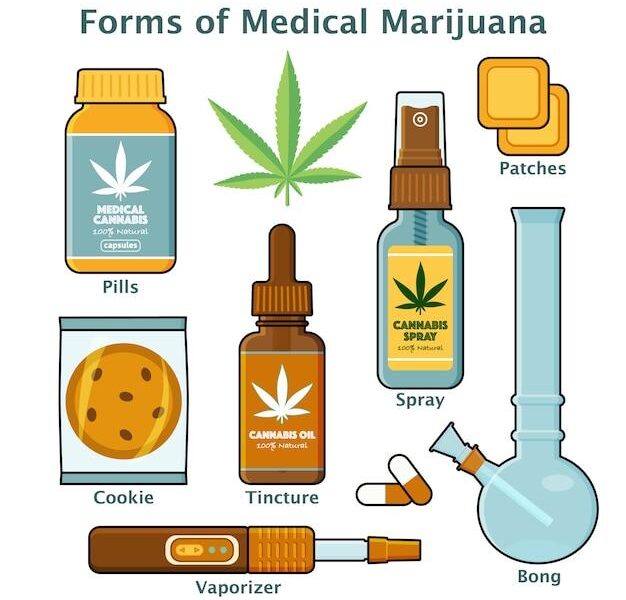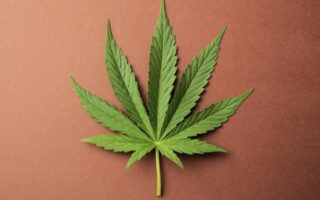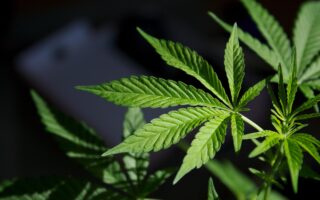Exploring the Green Spectrum: A Journey Through Different Forms of Weed
As the world of cannabis continues to expand and evolve, so too do the myriad forms in which this versatile plant manifests. From the fragrant buds that sway in the breeze to the concentrated oils that glimmer in glass vials, the varieties of weed available today offer something for every palate and preference. In this article, we embark on an exploration of the diverse forms of cannabis, delving into their unique characteristics, uses, and the experiences they can provide. Whether you are a seasoned connoisseur or a curious newcomer, understanding the full spectrum of weed can enhance your appreciation of this complex plant and its possibilities. Join us as we unravel the intricate tapestry of cannabis, illuminating the path from the garden to the bowl, and everything in between.
Table of Contents
- Exploring the Diverse Strains of Cannabis and Their Unique Effects
- Understanding Consumption Methods: From Smokables to Edibles
- Cultivation Techniques and Their Impact on Quality and Flavor
- Navigating the Legal Landscape: A Guide to Responsible Use and Purchase
- Q&A
- Key Takeaways
Exploring the Diverse Strains of Cannabis and Their Unique Effects
Cannabis comes in a multitude of strains, each offering its own unique blend of effects due to its distinct chemical composition. The primary categories are Sativa, Indica, and Hybrid, each serving different purposes and experiences for users. Sativa strains are often celebrated for their uplifting and energizing properties, making them suitable for social activities and creative endeavors. On the other hand, Indica strains are commonly associated with relaxation and calmness, ideal for unwinding or relieving stress after a long day. Hybrid strains combine traits from both categories, offering a balanced experience tailored to a user’s preference. Here’s a brief look at the characteristics of each type:
| Strain Type | Effects | Best For |
|---|---|---|
| Sativa | Uplifting, Energetic | Creative Activities, Socializing |
| Indica | Relaxing, Sedative | Stress Relief, Sleep |
| Hybrid | Balanced | Customizable Experiences |
Beyond these primary categories, cannabis strains are further distinguished by their unique flavor profiles and aromas, influenced by their terpene content. For instance, certain strains may offer fruity notes, while others can be earthy or spicy. This aromatic diversity enhances not just the experience but also contributes to the therapeutic benefits users may seek. Terpenes such as myrcene, limonene, and caryophyllene can interact with cannabinoids to amplify particular effects, promoting a more tailored experience. Discovering the right strain might just require some exploration, as personal preferences can play a significant role in the enjoyment and effectiveness of cannabis.
Understanding Consumption Methods: From Smokables to Edibles
When it comes to enjoying cannabis, users can choose from a variety of consumption methods, each offering unique experiences and effects. The most traditional option is smoking, which can be done through rolling papers, pipes, or bongs. This method provides a quick onset of effects, making it a popular choice for many. Additionally, vaporizers have become increasingly popular because they heat the cannabis without combustion, potentially offering a smoother inhalation experience. The method of consumption can significantly influence not only the experience but also the overall effects felt by the user.
Another intriguing category includes edibles, which are food items infused with cannabis extracts. Edibles offer a distinct experience, typically featuring longer onset times and more prolonged effects than smoking. Common forms of edibles can include snacks like brownies, gummies, or even beverages. For those looking to delve into another dimension of consumption, topicals provide an alternative by delivering the benefits of cannabis through creams and balms applied directly to the skin, offering localized relief without the psychoactive effects associated with other ingestion methods. Each of these methods caters to diverse preferences and effects, making it essential for users to explore and find the right form that complements their lifestyle.
| Consumption Method | Onset Time | Duration of Effects | Psychoactive Effects |
|---|---|---|---|
| Smoking | Immediate | 1-3 hours | High |
| Vaporizing | Immediate | 1-3 hours | High |
| Edibles | 30-90 minutes | 4-8 hours | Intense |
| Topicals | Variable | 1-6 hours (localized) | None |
Cultivation Techniques and Their Impact on Quality and Flavor
The journey from seed to harvest involves an array of cultivation techniques that can significantly influence the quality and flavor of cannabis. Different methods—whether organic, hydroponic, or aeroponic—offer unique benefits and drawbacks. For example, organic cultivation often results in a richer terpene profile, which enhances the aroma and taste of the final product. Conversely, hydroponics can lead to quicker growth cycles and potentially higher yields, though some enthusiasts argue it lacks the depth of flavor that soil-grown cannabis provides. The balance between yield and quality often dictates growers’ choices.
Additionally, factors such as lighting, nutrient management, and climate control play pivotal roles in shaping the plant’s profile. In indoor settings, growers can meticulously control environmental conditions, cultivating strains that exhibit vibrant colors and potent effects. Here’s a brief comparison of how different cultivation techniques can impact key characteristics of cannabis:
| Technique | Impact on Quality | Impact on Flavor |
|---|---|---|
| Organic | Rich terpenes, full-spectrum effects | Complex, earthy flavors |
| Hydroponic | Faster growth, high yields | Sweeter, less complex |
| Aeroponic | High nutrient absorption | Intense aroma, variable taste |
Navigating the Legal Landscape: A Guide to Responsible Use and Purchase
As the legalization of cannabis continues to evolve across various jurisdictions, understanding the legal intricacies surrounding purchasing and using different forms of weed is essential. Whether you’re contemplating the therapeutic applications of CBD or the recreational enjoyment of THC, it’s crucial to familiarize yourself with state or local laws governing these products. Responsible consumption begins with sourcing from reputable suppliers who adhere to safety regulations. This can include purchasing from licensed dispensaries or following the proper channels for home cultivation where permitted. When in doubt, consult official resources or community initiatives aimed at educating users on compliance and best practices.
There are several predominant forms of weed that enthusiasts may encounter, each serving distinct purposes and preferences. Below are some of the most common types:
- Flower: The raw, dried buds of the cannabis plant, available in various strains.
- Concentrates: Highly potent extracts that include oils and waxes, used primarily for dabbing.
- Edibles: Cannabis-infused food products, which provide a different experience through digestion.
- Tinctures: Liquid cannabis extracts taken sublingually for fast absorption and discreet use.
| Form | Method of Use | Onset Time |
|---|---|---|
| Flower | Smoking or vaping | Immediate |
| Concentrates | Dabbing or vaporizing | Immediate |
| Edibles | Consuming as food | 30-90 minutes |
| Tinctures | Oral or sublingual | 15-30 minutes |
Q&A
Q&A: Exploring the Diverse World of Cannabis
Q: What are the different forms of cannabis?
A: Cannabis comes in a variety of forms, each offering unique benefits, effects, and methods of consumption. The most common forms include dried flower (bud), concentrates (like oils, waxes, and shatter), edibles (such as gummies and brownies), tinctures (liquid extracts), and topicals (creams and balms). Each form can provide different experiences based on their potency, method of delivery, and personal preferences.
Q: What is dried flower and how is it used?
A: Dried flower, or bud, is the most recognizable form of cannabis. It consists of the plant’s dried and cured flowers, rich in cannabinoids and terpenes. Users typically consume it by smoking or vaporizing, which allows for quick onset of effects. It can be rolled into joints, packed into bowls, or used in bongs.
Q: Can you explain cannabis concentrates?
A: Concentrates are highly potent forms of cannabis that extract specific compounds, resulting in a product with higher concentrations of cannabinoids and terpenes. They include oils, hash, shatter, and wax. These are often consumed via dabbing (a method using heat to vaporize the concentrate) or by adding them to flower. Concentrates are popular among experienced users seeking stronger effects.
Q: What are cannabis edibles and how do they work?
A: Edibles are food or beverage products infused with cannabis extracts. They offer a discrete and tasty way to consume cannabis, but the effects typically take longer to set in, often ranging from 30 minutes to 2 hours. Because the body metabolizes the cannabinoids differently when ingested, the effects can also be more intense and long-lasting compared to smoking or vaporizing.
Q: What are tinctures and how are they used?
A: Tinctures are cannabis extracts combined with a carrier liquid, often alcohol or glycerin. They are typically packaged in dropper bottles, making it easy to dose. Users can take tinctures sublingually (under the tongue) for rapid absorption or add them to food and drinks. This versatile form is favored for its precise dosing and discreet use.
Q: How do topicals differ from other forms of cannabis?
A: Cannabis topicals are infused with cannabinoids and applied directly to the skin, offering localized relief without psychoactive effects. They come in various forms, including creams, balms, and oils. Topicals are often used for managing pain, inflammation, or skin conditions, allowing users to enjoy the therapeutic benefits of cannabis without the high typically associated with consumption.
Q: Is it safe to mix different forms of cannabis?
A: While many users experiment with combining different forms of cannabis, it’s essential to approach this practice with caution. Each form has its own onset time, potency, and effects. Start low and go slow to understand how your body interacts with various products. Monitoring your intake and being mindful of your tolerance can help you avoid unwanted side effects or overconsumption.
Q: How do I choose the right form of cannabis for me?
A: Choosing the right form of cannabis depends on your individual preferences, desired effects, and lifestyle. Consider factors like onset time, duration of effects, and personal comfort in consuming methods. Experimenting with small amounts of different forms can help you find what works best for your needs while ensuring a safe and enjoyable experience.
Q: What should I consider when trying cannabis for the first time?
A: If you’re new to cannabis, it’s crucial to start slow. Opt for lower-potency products, particularly edibles, since their effects can be more intense. Choose a comfortable setting and consider the time you’ll have to experience the effects, especially with longer-acting forms like edibles. It’s always advisable to consult with knowledgeable staff at a dispensary if you’re unsure about what to choose.
Key Takeaways
In the vast and vibrant landscape of cannabis culture, the myriad forms of weed available today invite both curiosity and exploration. From the soothing embrace of edibles to the potent allure of concentrates, each variation offers its own unique experience and benefits. As we have journeyed through the diverse manifestations of this multifaceted plant, it is clear that understanding these differences not only enhances appreciation but also empowers informed choices. As cannabis continues to evolve and integrate into the fabric of society, it beckons us to approach it with awareness and respect. Whether you’re a seasoned connoisseur or a curious newcomer, the world of weed holds endless possibilities—always evolving, always inviting us to discover more. So, as you navigate this green frontier, may you find the form that resonates with you, unlocking new experiences and insights along the way.



